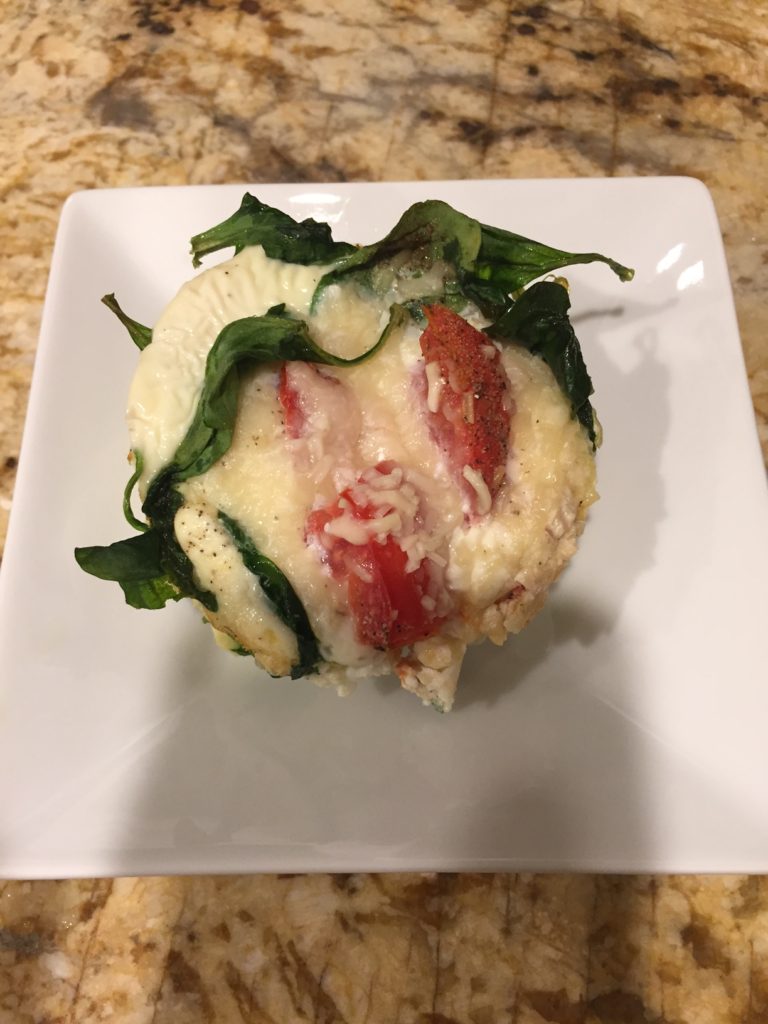
Guatemalan tamales have been a staple of native cuisine since ancient Mayan and Aztec times and can be traced back to 8000-5000 BC (Hoyer 2008). The Mayans and Aztecs were known to take women along with them in battle so that they could cook for them. The women were charged with making the masa for tortillas meats, stews and drinks, and soon, tamales were conceived as a convenient food developed to feed the soldiers while they were in battle. The Mayan Empire inhabited the land we know today as Guatemala and “reached its peak from 300-900 AD before collapsing amid tribal feuding” (Thyberg 2016). Tamales are officially defined as “a Mexican dish of seasoned meat wrapped in cornmeal dough and steamed or baked in corn husks” (Merriam-Webster 2016). However, Guatemalan tamales have their own indigenous roots and therefore have several variations from the basic Mexican tamale as we know it today.
Tamales are typically enjoyed in Guatemala during Christmas and New Year’s but they are usually made for the weekends, specifically, Saturday’s. There are three different variations of the Guatemalan tamale that include: Colorado (red), negro (black), and chuchito (loosely translates into little dog). There is also a smaller tamale that is called a pache.
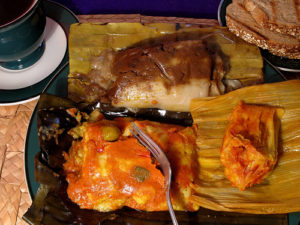
Credit Given to: Rudy A. Girón http://antiguadailyphoto.com/2006/12/25/guatemalan-tamales-for-christmas-colorado-negro-chuchito/#.WEeOSPkrLcu
The only difference is the pache is made from potatoes rather than corn masa and they are only sold on Thursday’s, starting to see a trend here? Guatemalan’s definitely like to know what they’re eating on certain days of the week. Kind of like Taco Tuesday here in the United States. Tamales here in the United states hare available through select Guatemalan panaderias or bakeries. They are few and far between so I like to cling to the one we have frequented for the last 10 years Panaderia Guatemala located in Harbor City near the corner of Lomita Boulevard and Normandie. Tamales are usually served with a side of Guatemalan bread called a Pirujo, which is a lot like Hawaiian bread but a bit less sweet. It is also necessary to have a fresh slice of lime to squirt on top of the tamale to impart freshness. One important rule on Guatemalan tamale eating etiquette is that you can eat as many tamales as you want but you can only have one on your plate at a time.
The only person in my family that I have actually seen make tamales from scratch was my great aunt my mom’s side, may God rest her soul. I chalk this up to the fact that we are all very busy with our lives and don’t have the time to actually make such a labor-intensive food. I often think that our Guatemalan ancestors were either really devoted to food or perhaps just had a lot of time on their hands. Nowadays, when we need tamales for Christmas and New Year’s we just order them from the Panaderia Guatemala and they magically appear warm and ready to go the day of. Although there are simpler recipes online, I wanted to share one that was as authentic as possible. The recipe that follows is one that I gathered from my grandmother telling me how to make them since my family has no actual written recipe and one that I found online at, The Weiser Kitchen, that is the closest in flavor, process, and style.
Ingredients:
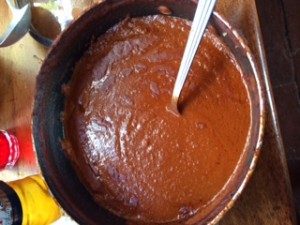
Credit Given to: Marla http://epicureantravel.com/guatemalan-tamales/
8 tomatoes whole
2 large yellow onions, peeled, cut in quarters
1 pound medium tomatillos
4 garlic cloves, peeled
1 tablespoon canola oil
3 fresh bay leaves
3 teaspoons fresh thyme
1 ounce dark chocolate
2 dried pasilla chiles
1 dried guacque (huaques) chile or dried guajillo chile
2 cups reserved chicken stock
Crack or cut open the dried peppers, then shake out the seeds and snap off the stems. Tear or cut into coarse pieces and place in a large bowl. Warm 2 cups of the reserved chicken cooking liquid and place in the bowl with the peppers. Let stand, uncovered, for 5 to 8 minutes.
In a strong large blender or in a food processor, blend or process the tomatoes, onions, tomatillos and garlic until smooth, in batches if necessary. Transfer to a bowl.
Add the softened peppers and pepper soaking water to the processor and process until completely smooth. If the mixture is not completely pureed, you must strain it, no lumps allowed here!
Heat the oil in a large pot over high heat until shimmering. Add the pureed tomato and tomatillos, pureed peppers, bay leaves, and thyme. Cover and bring to a boil, then reduce heat to simmer and add the chocolate. Cover and cook over low heat for 1 hour, stirring occasionally.
For the Spice Mix:
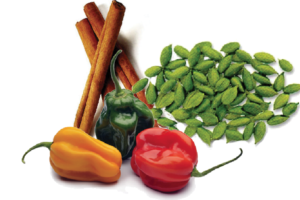
Credit Given to: Ken Veronda http://www.revuemag.com/2011/12/spices/
1 (2-inch) cinnamon sticks
3 tablespoons sesame seeds
2 tablespoons pumpkin seeds
1 teaspoon whole cumin seeds
½ teaspoon whole cloves
1 tablespoon rice flour
These must be toasted. Yes, all of them! In a food processor, finely grind the cinnamon, sesame seeds, pumpkin seeds, cumin, and cloves. Stir into the sauce. Whisk in the rice flour, and simmer over the lowest heat possible, 45 minutes. (Sauce can simmer for up to 3 hours, as long as it is covered and stirred occasionally to prevent burning).
For the Chicken Filling:
2 pounds chicken breasts
4 cups water
4 garlic cloves, peeled
3 celery stalks, leaves attached, roughly chopped
1 large onion, skin, stem, and root end removed
4 bay leaves, fresh preferred
1 teaspoon salt
½ teaspoon whole black peppercorns
In a large pot add all of the chicken filling ingredients. Cover and bring to a boil over high heat. Reduce the heat to a simmer and cook until the meat is fork tender, 45 minutes to 1 hour.
Remove the chicken from the cooking liquid and transfer to a bowl. Skim, strain and reserve the liquid. Pour broth over the meat until just covered. Reserve the remaining broth. Cool the meat in the broth. As soon as you can handle the chicken, remove the meat from the bone, tear into strips and return to the broth. The chicken can be prepared up to 2 days in advance. Cover and refrigerate the chicken in the broth.
For the Masa:
12½ cups of water, chicken stock or strained cooking liquid from the pork and/or chicken
2 pounds masa harina (instant masa)
8 ounces unsalted butter
½ cup canola oil
2 tablespoons kosher salt to taste
1 whole large yellow onion, peeled, stem, and root end removed
2 tablespoons kosher salt, or more to taste
Combine the water and masa in a large pot over medium heat. Cook, stirring, until warm, then add the butter (in chunks), whole onion, oil and salt. Continue to cook, stirring (like your life depended on it) with a strong spatula, until the masa thickens and becomes very pale in color (like cream of wheat), and a pasty residue appears around the pot, at least ½ hour. Remove from heat and transfer to a lightly oiled bowl. Cover with foil.
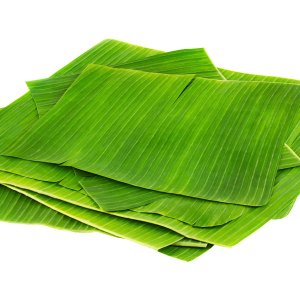
Credit Given to: https://freshproducegroup.us/product-tag/tamales-jarochos/
The leaves for Wrapping the Tamales:
40 large banana leaves, frozen and fully defrosted, or fresh
Parchment paper cut to size, each approximately 9 by 13-inches
4 red bell peppers, julienned or cubed
Green Olives (optional)
Kitchen twine
Fit a large pot with a steamer rack or a pasta insert and fill the bottom with any remaining stock and water to about ¼ to ½ inch below the steamer rack or the bottom of the pasta insert. Lay 1 to 2 banana leaves on the steamer to cover. Cover the pot, bring to a boil and reduce to a simmer while you make the tamales.
Place a piece of parchment paper on a work surface. Fold one long side of the paper over, about ½ inch, creating a small ledge (see the picture). Lay a banana leaf on the paper. Place ¼ cup masa on the leaf and flatten it out. Place 1 tablespoon sauce, then 1 tablespoon or about 1 ounce chicken over the masa. Add a few peppers or olives if you like them.
Fold the 2 short sides in towards the center until almost touching. Take the long side of the paper without the small fold and fold it over towards the center, Take the last side with the fold and fold it into the center to form a packet. Flip over and tie with kitchen twine both lengthwise and widthwise. (Or use a spare banana leaf, torn into strips). Place the packet, standing up in the steaming pot and cover. Make sure the water remains at a bare simmer, replenishing as necessary, without splashing the tamales. Repeat with remaining tamales.
Cover the packets with all remaining banana leaves. Cover the pot and steam for at least 45 minutes or up to 2 hours. Depending on the size of the pot here, remember that it could take up to 6 hours if you are using a traditional Guatemalan pot that can hold many tamales at the same time.
Corn was vital in the sustainability of the Mayan Empire and they quickly developed ways to maximize their crops and farming techniques. They developed the slash and burn technique in which they would grow crops on a field for 2 years and then burn it to keep the soil fertilized and move on to a different plot of land. They would then return to the same field 5 years later. This allowed them to keep planting the same crops, mainly corn, squash, and beans while keeping the neighboring land fertile for future use.
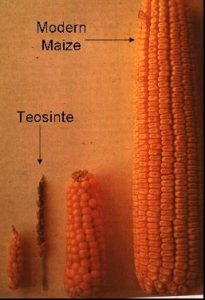
Credit Given to: http://www.dirtbrothers.org/college /introarchaeology002.html
The ancient ancestor of the corn plant we see today was originally called teosinte and “grew wild on the Honduran/Guatemalan border and the Sierra Madre Mountain Range in Mexico” (“Maya Agriculture” 2016). Teosinte could be ground into flour or popped like popcorn, but the first varieties only had 6-10 kernels.
The corn we see today is the process of seed selection and cross breeding, can no longer grow wild on its own, and requires extensive weed cultivation and constant watering (Buiatti, Christou & Pastore 2013). The demand for growing corn and other crops for our growing population on earth has “led to the building of irrigation canals and farming terraces throughout the Western Hemisphere (“Maya Agriculture” 2016). This places a huge demand on our dependence on water especially here in California where we have experienced a prolonged drought. It is estimated that 80 percent of California’s water is used for agricultural production which puts things into perspective when we think of what we’re doing to combat the drought such as turning the water off when we brush our teeth and watering our lawns less. Maybe we need to take a closer look at agricultural water usage and how we can make that more efficient.
Guatemalans today still use corn for tortillas, tamales, breads, flours and even a hot drink called “atole”. In order to understand how important corn was to the Mayans I’d like to share the story of the Mayan Creation with you which explains why corn was so sacred to them. “According to Mayan Mythology God created man and woman from the seed of corn” and this solidifies just how vital this small grain was in culture and history for the people of Guatemala (“The Mixed Culture” 2014).
References
“Authentic Guatemalan Tamales – Bohemian Bowmans.” Bohemian Bowmans. N.p., 2016. Web. 16 Nov. 2016.
Banana Leafs. Digital image. Fresh Produce. N.p., n.d. Web. 7 Dec. 2016.
Buiatti, M., P. Christou, and G. Pastore. “The Application of GMOs in Agriculture and in Food Production for a Better Nutrition: Two Different Scientific Points of View.” Genes & Nutrition 8.3 (2013): 255–270. PMC. Web. 16 Nov. 2016.
“Creation Story of the Maya.” Welcome to Living Maya Time. N.p., n.d. Web. 16 Nov. 2016.
G., Victor, Jasmine G., Sandra B., Yessy M., and Jason M. “Guatemala Bakery – Harbor City – Harbor City, CA.” Yelp. N.p., 2012. Web. 16 Nov. 2016.
Girón, Rudy. Guatemalan Tamales. Digital image. Antigua Daily Photo. N.p., 25 Dec. 2006. Web. 7 Dec. 2016.
“Guatemalan Baked Goods … Cubilletes, Pirujos, Etc? – Chowhound.” N.p., n.d. Web. 16 Nov. 2016.
“Guatemalan Tamales for Christmas: Colorado, Negro & Chuchito.” AntiguaDailyPhoto.Com. N.p., 2016. Web. 16 Nov. 2016.
Hoyer, Daniel. Tamales. First ed. Salt Lake City: Gibbs Smith, 2008. Print.
“Maya Agriculture.” Maya Agriculture. N.p., n.d. Web. 16 Nov. 2016.
Marla. Tamale Sauce. Digital image. Epicurean Travel. N.p., 2 Mar. 2014. Web. 7 Dec. 2016.
“Tamale.” Merriam-Webster.com. Merriam-Webster, n.d. Web. 16 Nov. 2016.
Teosinte. Digital image. The Dirt Brothers. N.p., July-Aug. 1997. Web. 7 Dec. 2016.
@themixedculture. “The Importance of Corn in Guatemala.” The Mixed Culture. N.p., 2014. Web. 16 Nov. 2016.
Thyberg, David. “Traditional Food of Guatemala.” USA Today. Gannett, n.d. Web. 16 Nov. 2016.
Veronda, Ken. Guatemalan Spices. Digital image. Revue Guatemala’s English Language Magazine. N.p., 14 Dec. 2011. Web. 7 Dec. 2016.
Weiser, Tammy Ganeles. “Guatemalan Tamales with Chicken | The Weiser Kitchen.” The Weiser Kitchen. N.p., n.d. Web. 16 Nov. 2016.

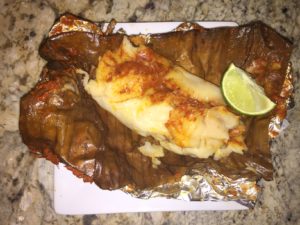 Tamales are typically enjoyed in Guatemala during Christmas and New Year’s but they are usually made for the weekends, specifically, Saturday’s. There are three different
Tamales are typically enjoyed in Guatemala during Christmas and New Year’s but they are usually made for the weekends, specifically, Saturday’s. There are three different 